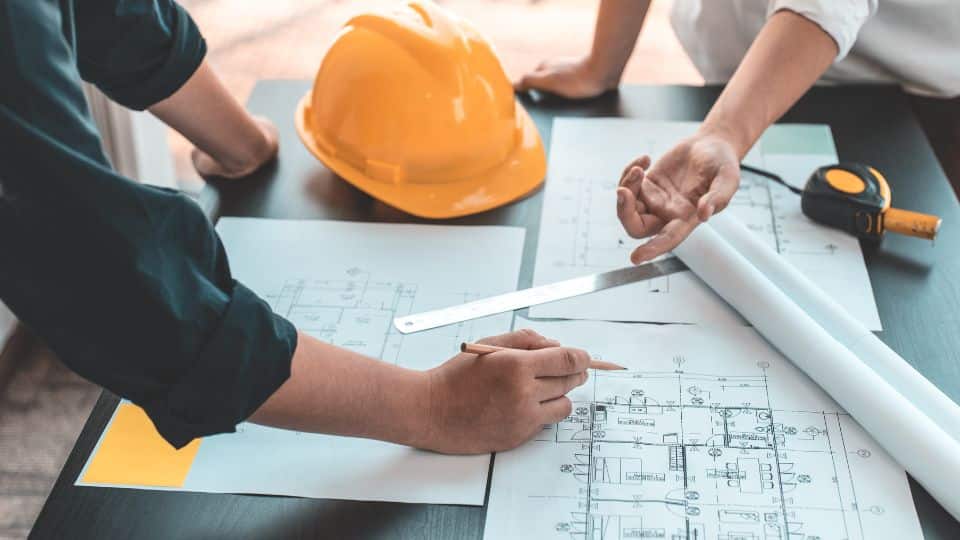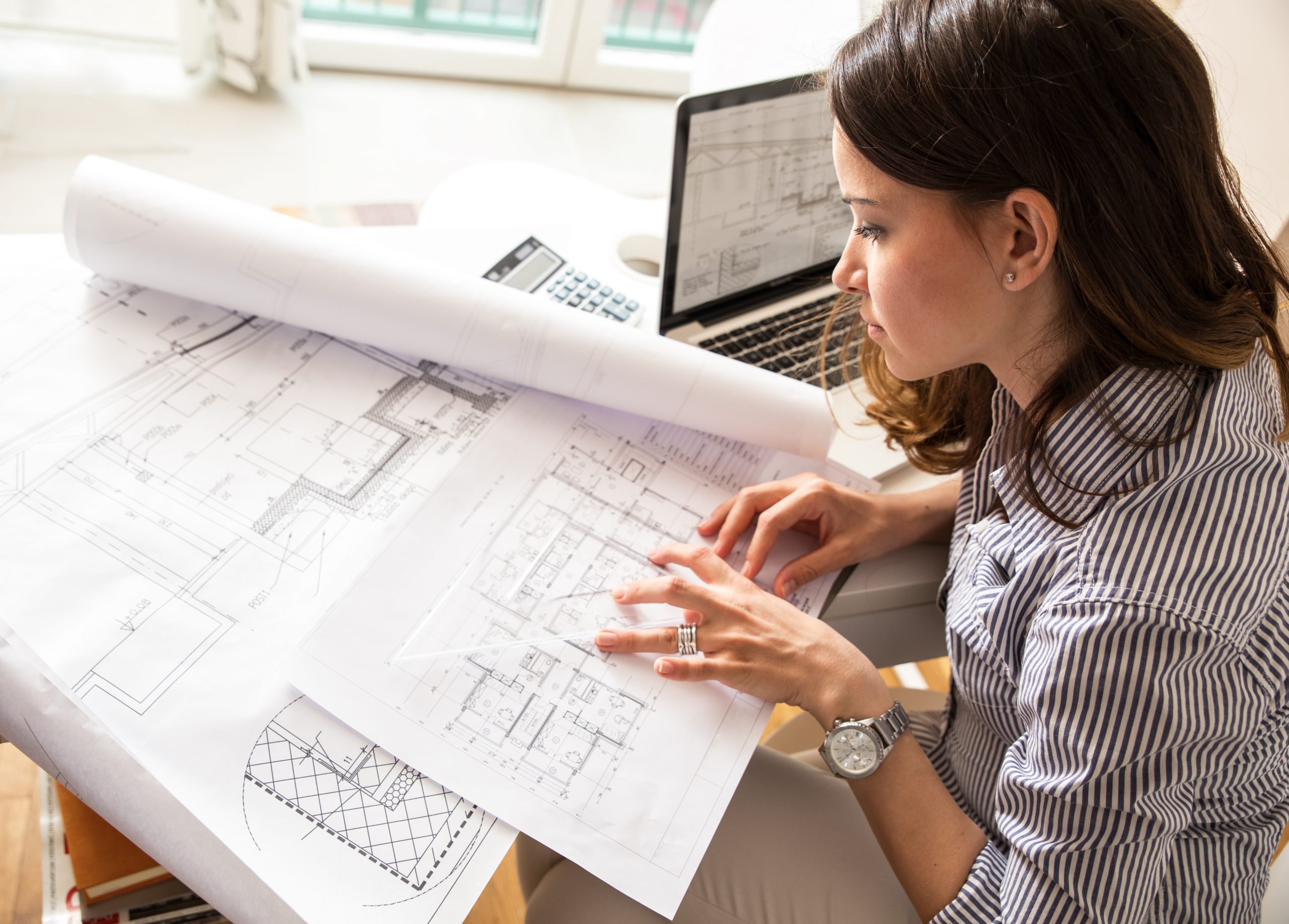Architect Insights on Combining Form and Function
Wiki Article
Understanding the Diverse Profession Paths Available for Aspiring Architect
As a hopeful Architect, you have a world of job paths waiting for you. Whether you're drawn to conventional architecture or the subtleties of lasting style, there's a particular niche that lines up with your rate of interests.Traditional Design: Designing Frameworks and structures
Typical style concentrates on making buildings and frameworks that blend functionality with visual allure. As you discover this area, you'll appreciate the intricate balance between form and function. You'll discover to attract inspiration from historic styles, incorporating elements like balance, materials, and craftsmanship. Your layouts can mirror cultural heritage, showcasing neighborhood traditions while fulfilling contemporary needs.You'll create abilities in preparing, model-making, and website analysis, allowing you to picture and connect your concepts properly. Engaging with customers, you'll need to recognize their vision and translate it right into possible designs.
Moreover, building codes and sustainability techniques are necessary in your job, ensuring your frameworks are secure and eco-friendly. As you expand in your profession, you'll find possibilities in residential, commercial, or perhaps repair tasks, each offering one-of-a-kind challenges. Embracing conventional style leads the way for a satisfying career that pays tribute to the past while shaping the future.
Urban Planning: Shaping Areas and Public Spaces
As an aspiring Architect, you can play an essential role as a metropolitan organizer, changing how neighborhoods function and engage. By employing community interaction techniques, you'll assure that locals have a voice in shaping their environment. Plus, incorporating sustainable design concepts will aid create areas that not just meet today's needs but likewise secure the future.Duty of Urban Planners
While numerous may believe of designers as the sole visionaries behind structures, urban organizers play an essential duty in shaping the broader landscape of areas and public areas. They examine land use, zoning regulations, and neighborhood requires to develop sustainable environments that improve lifestyle. By working together with various stakeholders, you'll aid make parks, transport systems, and houses that promote social interaction and accessibility. Urban organizers additionally focus on ecological factors to consider, ensuring that developments incorporate eco-friendly rooms and support biodiversity. Your experience in spatial style and neighborhood characteristics permits you to envision future growth while preserving social heritage. In this important duty, you'll straight affect just how people experience their surroundings, making every task a possibility for positive modification.Neighborhood Involvement Techniques
Efficient community interaction techniques are important for metropolitan planners to guarantee that the voices of citizens are listened to and valued in the planning process. To foster meaningful discussion, you must focus on open online forums and workshops where neighborhood members can express their ideas and problems. Use studies and social networks to get to a more comprehensive audience, guaranteeing diverse viewpoints are consisted of. Teaming up with neighborhood companies can boost depend on and assist in deeper connections. It is necessary to provide clear info regarding suggested jobs and decision-making procedures, allowing citizens to feel informed and encouraged. By actively including and listening comments, you'll create areas that mirror the community's demands, inevitably leading to even more sustainable and successful city environments. Accept transparency and continual dialogue for long-term impact.Sustainable Layout Principles
When developing metropolitan spaces, including lasting style principles is critical for developing atmospheres that prosper both ecologically and socially. Take into consideration incorporating environment-friendly spaces, like yards and parks, to improve biodiversity and enhance air quality.Designing with water conservation in mind is likewise vital-- consider rainfall gardens and permeable surface areas to handle stormwater. Involving community participants during the planning procedure warranties that the spaces you produce satisfy their needs and motivate social interaction. By accepting these principles, you'll contribute to lively, lasting urban landscapes that benefit every person.

Landscape Style: Creating Lasting Outdoor Environments
As you explore landscape style, you'll uncover important layout principles that produce useful and gorgeous exterior areas. Sustainable techniques play a crucial function in ensuring these atmospheres prosper while minimizing environmental impact. And also, you'll locate a selection of career possibilities that allow you to make an actual difference in how individuals engage with nature.Layout Concepts in Landscape
Comprehending style principles in landscape architecture is essential for producing lasting exterior environments that balance with nature. You'll require to contemplate aspects like balance, percentage, and scale to ensure your layouts really feel cohesive and inviting. In addition, pay focus to seasonal changes, making with materials that match the environments year-round.Sustainable Practices Overview
Lasting practices in landscape design not just concentrate on looks but likewise focus on environmental health and wellness and resource conservation. By integrating native plants, you improve biodiversity and decrease the need for chemical plant foods and chemicals. Executing efficient irrigation systems helps preserve water and reduces drainage, protecting neighboring ecosystems. You can create spaces that promote soil wellness, such as utilizing natural materials and practicing permaculture principles. In addition, integrating environment-friendly framework, like rainfall gardens and permeable pavements, help in stormwater administration and reduces metropolitan heat. You contribute to a healthier earth and provide areas that promote area connection when you produce outside environments with sustainability in mind. Inevitably, these practices guarantee your layouts profit both people and the atmosphere for several years to come.Career Opportunities Exploration
With a solid foundation in lasting techniques, landscape design supplies a selection of job courses that allow you to make a purposeful impact on the environment. You could function as a landscape designer, producing visually pleasing and practical exterior areas, or specialize in ecological reconstruction, helping to restore broken ecosystems. Urban planners frequently work together with landscape engineers to develop green spaces in urban setups, enhancing city livability. If you're enthusiastic regarding education and learning, take into consideration coming to be a landscape design teacher, motivating future generations. Furthermore, you could function with nonprofits concentrated on environmental sustainability or engage in research study to introduce brand-new techniques. Each path not only shapes lovely environments but additionally cultivates a healthier planet for future generations.Lasting Style: Concentrating On Eco-Friendly Practices
As you discover your profession in design, embracing environmentally friendly techniques can set you apart in a competitive area. Lasting style focuses on producing structures that minimize environmental effect while improving passenger well-being. By including renewable materials, energy-efficient systems, and lasting building methods, you'll contribute to a greener future.Beginning by acquiring knowledge of environment-friendly accreditations like LEED or BREEAM, which can bolster your qualifications. Think about how all-natural light, air flow, and thermal effectiveness can enhance design. Work together with engineers and ecological experts to innovate solutions that decrease waste and conserve sources.
Don't forget the importance of neighborhood involvement-- interesting local stakeholders can inspire styles that balance with the setting. As customers increasingly prioritize sustainability, your expertise in environmentally friendly methods will certainly not only bring in projects yet also accomplish your passion for accountable style. Accept this critical aspect of the profession, and watch your profession thrive.
Historical Preservation: Protecting and Recovering Social Heritage
While you commence on your architectural trip, take into consideration the important duty of historic preservation in maintaining our social heritage. This area concentrates on the defense and reconstruction of significant buildings, sites, and structures that tell the tales of our past. By taking part in historic preservation, you'll aid protect the architectural legacy that forms community identification.As a historic preservation Architect, you'll assess historic relevance and examine the problem of structures. You'll function closely with chroniclers and guardians to guarantee genuine restoration methods are employed. This career course permits you to mix imagination with best site research study, allowing you to design options that appreciate original materials and workmanship.
Your job not just adds to sustainability by reusing existing structures yet likewise fosters a feeling of satisfaction within neighborhoods. Embracing this course will assist you become a guardian of history, maintaining the tales and looks that improve our lives.
Inside Design: Enhancing Indoor Spaces
Historic preservation and interior design both share a commitment to boosting the built atmosphere, yet they concentrate on various aspects. While historical conservation emphasizes keeping a structure's cultural and historic worth, indoor design zeroes in on maximizing interior spaces for capability and looks.As an aspiring Architect, you'll locate that indoor architecture permits you to mix creativity with technological skills. You'll develop spaces that not just look excellent but also promote convenience and efficiency. This field entails understanding how light, color, and products communicate within an area, influencing state of mind and usability.
You'll service different tasks, from domestic homes to industrial offices, making sure that each atmosphere satisfies the requirements of best site its owners. By prioritizing individual experience, you can change insides right into useful and inspiring spaces, making a substantial influence on exactly how people connect with their environments. Accept the opportunity to enhance indoor settings and form the means people live and function.
Industrial Layout: Merging Functionality With Visual Appeals
Commercial layout plays an important duty in producing items that seamlessly blend looks with performance, ensuring that what you use everyday is not only visually appealing but additionally sensible. As an aspiring Architect, you can immerse yourself in this area, focusing on designing whatever from furniture to customer electronics. Your job entails recognizing customer needs, materials, and manufacturing processes, enabling you to special info develop cutting-edge options that boost day-to-day experiences.In industrial style, you'll typically work together with marketers, producers, and engineers, making sure that your designs are not just beautiful however likewise viable. This occupation path offers a vibrant environment where imagination meets practicality, making it a satisfying option for designers interested in forming the items of tomorrow.
Frequently Asked Concerns
What Educational Credentials Do I Required to End Up Being an Architect?
To become an engineer, you'll require a specialist level in style, generally a Bachelor's or Master's. Furthermore, you'll need to complete a teaching fellowship and pass the Architect Registration Evaluation to exercise lawfully.Exist Qualification Requirements for Various Architectural Job Paths?
Yes, there're accreditation demands for numerous building paths. Architect. You'll require to pass tests, total internships, and occasionally pursue specialized training, depending upon your chosen emphasis, like landscape style, metropolitan layout, or historic preservationWhat Software Abilities Are Vital for Architects Today?

Exactly How Can I Gain Practical Experience While Studying Style?
You can obtain functional experience by interning at building firms, joining style competitors, volunteering for community projects, or teaming up with schoolmates on real-world projects. These possibilities improve your abilities and construct useful links in the market.What Job Opportunities Exist Outdoors Traditional Design Firms?
You can discover numerous work possibilities outside standard style companies, like urban preparation, interior decoration, landscape style, building administration, realty development, or also duties in sustainability consulting. Each deals distinct challenges and rewards.Whether you're drawn to typical architecture or the subtleties of sustainable design, there's a niche that aligns with your rate of interests.When developing urban rooms, integrating sustainable layout principles is essential for creating settings that grow both environmentally and socially.As you check out landscape design, you'll uncover important layout principles that produce lovely and practical outside spaces.Recognizing layout principles in landscape style is vital for producing sustainable outside settings that integrate with nature.In industrial layout, you'll usually collaborate with marketing experts, engineers, and producers, guaranteeing that your styles are not only beautiful however also practical.
Report this wiki page